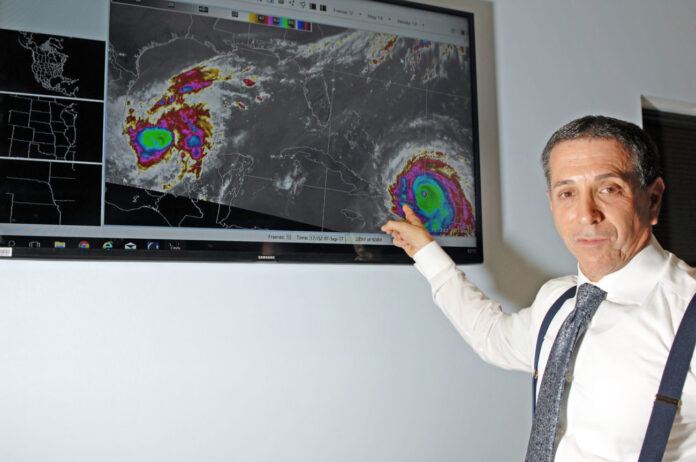The name “Barry Goldsmith” is practically synonymous with weather in the Rio Grande Valley.
The warning coordination meteorologist with the U.S. National Weather Service station in Brownsville is the NWS go-to guy for local media outlets any time the weather does something newsworthy, though it turns out the man himself is at least as interesting as the meteorological phenomena he explains to the public at large.
For instance, Goldsmith, who hales from the Washington D.C. area, played a key role early in his career making sure Congress backed the expansion of Doppler radar technology nationwide. Landing his first NWS job in the mid-1980s at the agency’s headquarters outside Washington, where he worked for seven years, he was assigned the task of gathering warning data based on Doppler radar from six “prototype offices” in the United States and seeing how it compared to conventional weather radar warnings in terms of accuracy.
“One of the critical reports I helped to author was to show that the verification statistics were significantly better than based on the older radar,” Goldsmith said.
The research was presented to Congress, which held the pursue strings, as part of an extremely expensive NWS initiative to make Doppler the national standard due to its obvious superiority.
“Back then we used transparencies,” Goldsmith said. “We didn’t have all the computer technology, but those transparencies were shown to Capitol Hill, and were a big part of ensuring that they would fund the nationwide Doppler radar program that we now have today. Of course it’s been improved a few times over, based on updated hardware and software, but the guts of it are the same.”
is report, “National Weather Service Performance Based on the WSR-88D,” is easy to find on the internet and is not light reading. Goldsmith said it felt good to be part of that effort, since it made NWS better at its mission of protecting lives and property.
A self-described “beach person,” Goldsmith got tired of Northeastern winters and looked for an NWS job in a more southerly latitude, winding up in Tampa Bay, Fla., where he worked for nine years before coming to the Valley in 2007. As for how he found his way into weather in the first place, Goldsmith said it’s like with most other forecast meteorologists. He became smitten at a young age — in his case, 6 or 7.
“I would take observations,” Goldsmith said. “I was thrilled by thunderstorms in the summer. I loved winter storms, snow, wind-driven snow. Hurricanes were interesting to me.”
He built his own little weather station. Goldsmith and his grandmother both kept weather observation logs and compared notes. While he considered other professions in high school, including sports journalism, Goldsmith was on an invisible trajectory, eventually surrendering to his destiny and enrolling in Penn State’s world-renowned meteorology program.
“Weather was always my hobby,” he said. “Meteorology became my field focus and I always tell students now when I go out to give school talks, career fairs or whatever, that I do a hobby for a living and it’s really fun.”





